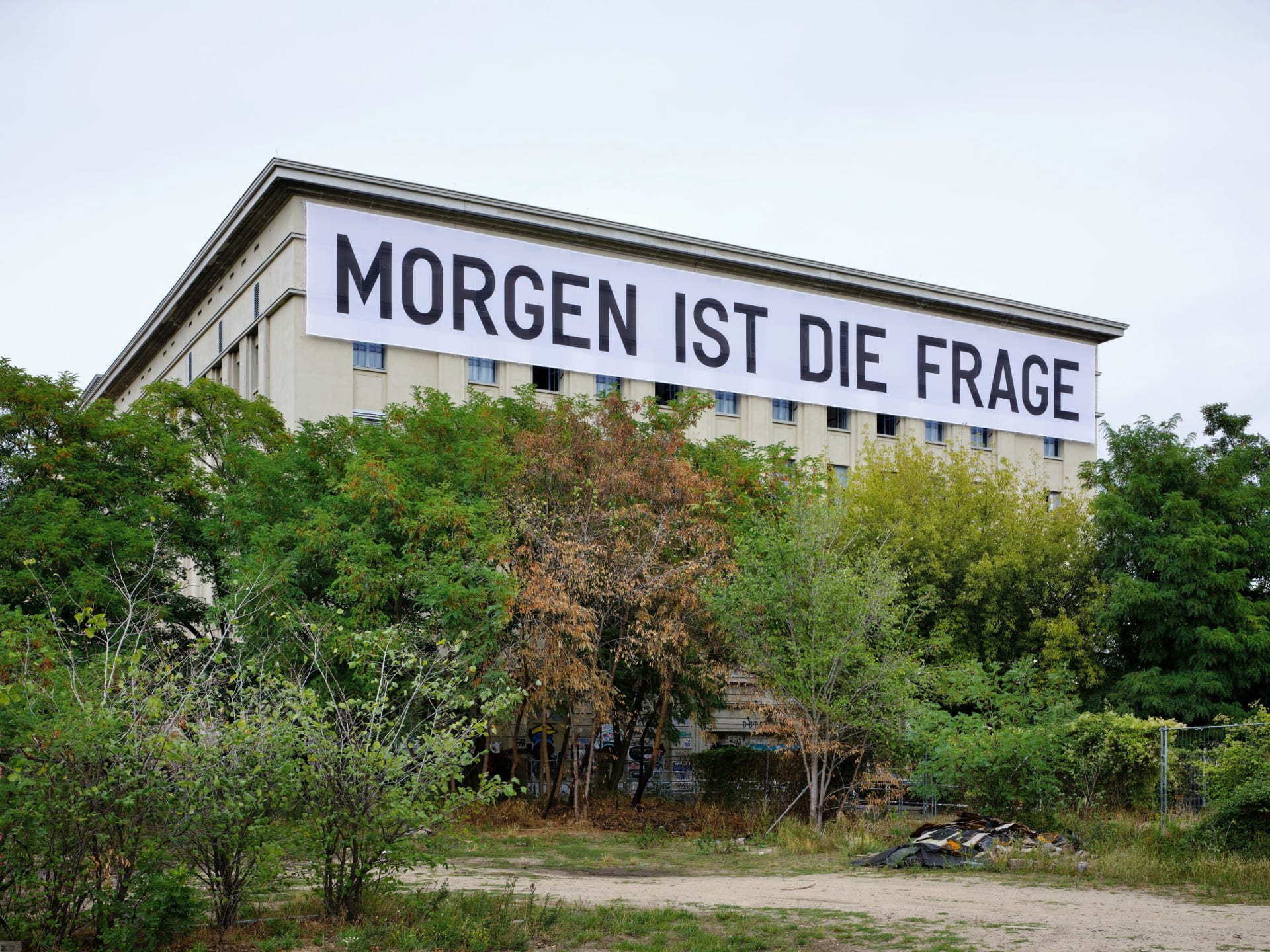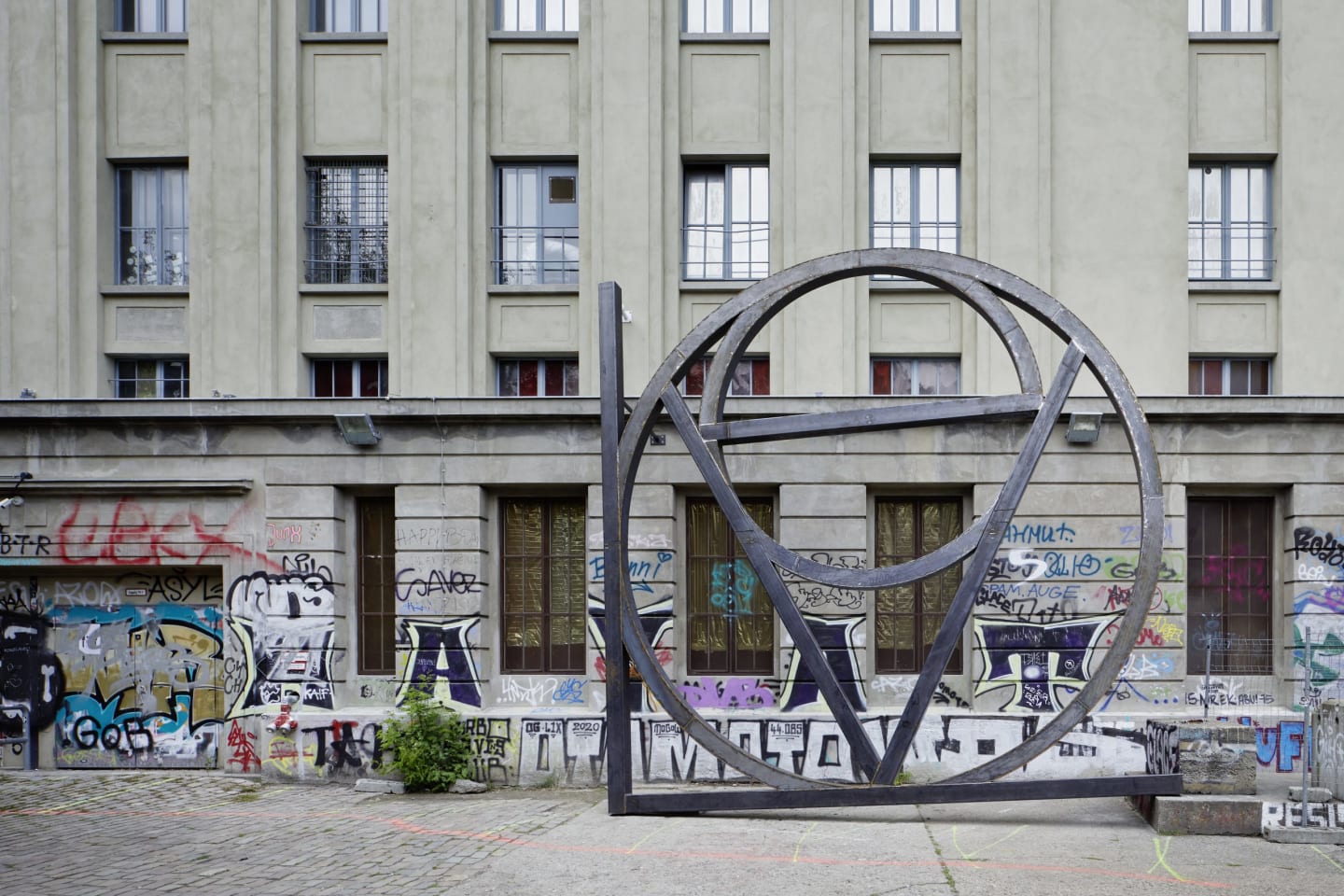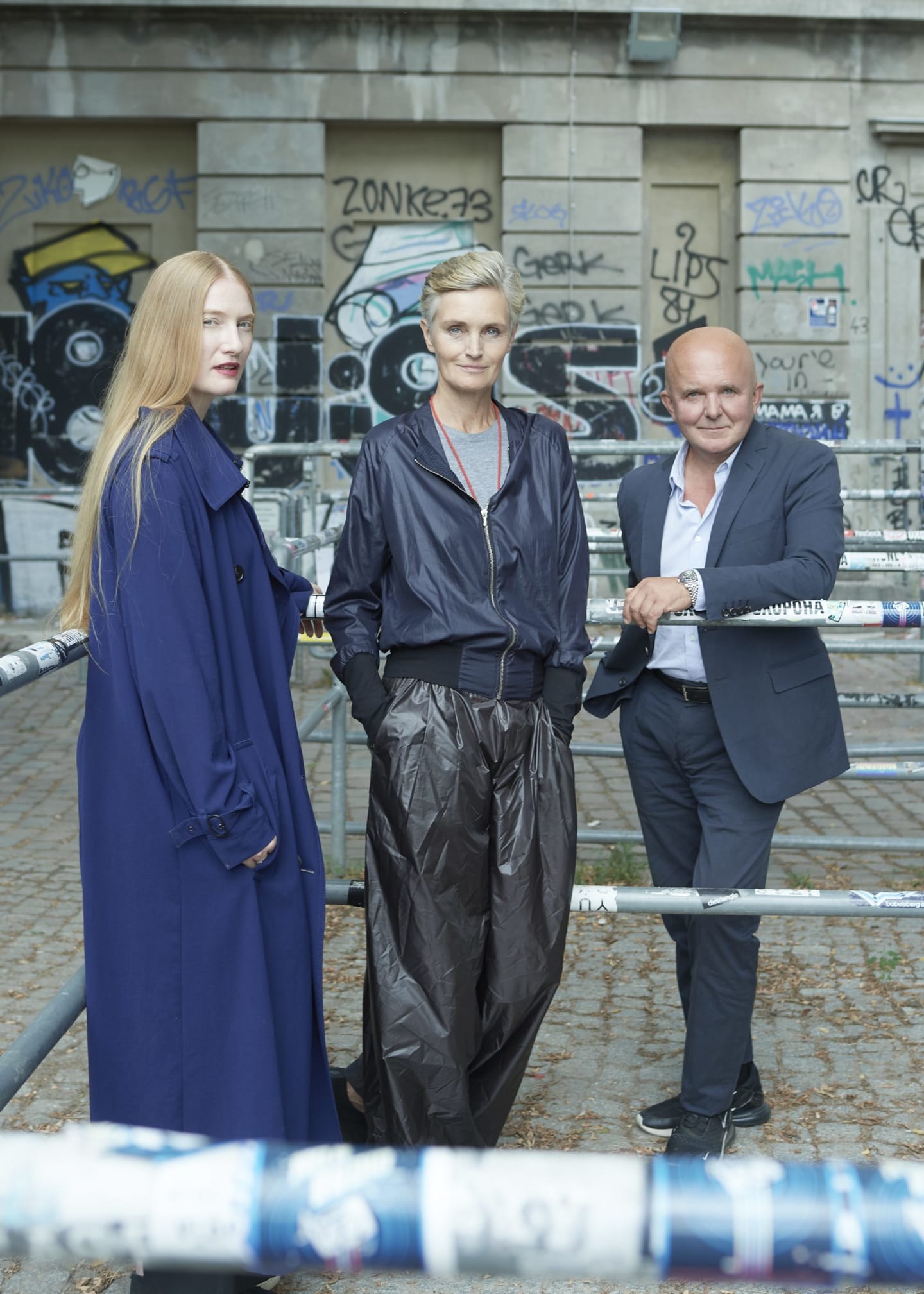
The “Studio Berlin” Exhibition by Berghain and Boros Captures a City in Flux
Converging crises in the art scene and the club scene come together in a group show featuring 115 artists
After 6 months of silence, Berghain’s doors are open once more—and this time, everyone’s on the guestlist. Its new exhibition in collaboration with the Boros Collection, titled “Studio Berlin,” offers a fresh perspective on the notorious venue’s indelible mark on the city. The presentation starts with a massive buoy from German artist Julius von Bismark. Suspended above the stairwell between the coat check and the main dancefloor, it bobs on tense wires that are linked to sensors in the Atlantic Ocean to recreate the ebbs and flows of the ocean waves. It reimagines the dancefloor as a body of water, using its plane as the default sea level. Viewed from underneath, its presence is imposing and foreboding, illuminated by a matrix of lights foreign to those used to dancing in the club’s darkness from dawn to dusk and back into the morning. But from the club’s ample dancefloor, now soundtracked by Nigerian artist Emekah Ogboh, the buoy is reimagined as another head in the crowd, bobbing to and fro on the horizon hypnotically to sounds sampled from Lagos’ streets. For a moment—after half a year at a standstill—the club feels alive again.
A collaboration between Berghain and star collectors Christian and Karen Boros, “Studio Berlin” is an invitation to review the club’s standing through fresh eyes and the perspectives of over 115 artists from Berlin, each hand-selected by Karen Boros and curator Juliet Kothe ahead of the show’s launch on September 9. Many of the works were created in the time since the lockdown took effect in March, and the exhibition exists as a dialogue between reflections on our past traditions and statements on our new normal.

The history of Berghain, we’re reminded by our tour guide, is one with deep roots in Berlin. The club is situated in a former powerplant, which was rented from Swedish energy provider Vattenfall. The building was purchased by the club’s owners Michael Teufele and Norbert Thormann in 2012, offering a forever home to their parties after their eviction from the original Ostgut premises in 2003. In the years since, the club has remained synonymous with the city’s marathon hedonism, and embedded in the city’s art scene as well.
“Studio Berlin” isn’t the first art show to take place within Berghain’s labyrinthine levels: In 2014, the space was home to “10,” a group show that celebrated the club’s ten-year anniversary at its current home. It was a collaborative show: Partygoers were invited to donate their urine through the club’s toilets for “Hero’s Journey (Lamp)” by Sarah Schönfeld, who had previously worked at Berghain as a bartender. The contributions were treated with a preservative and displayed in a vitrine in Berghain’s Halle, alongside work by Carsten Nicolai, famed bouncer Sven Marquardt, and other artists with personal connections to the club.
In “Studio Berlin”, we see artists reflect on their own relationships with the club, as well as with the interstitial space between the time before COVID-19 and whatever comes next. For some, it is a chance for new directions: Jeewi Lee, a Korean artist who planned to visit Morocco from Berlin for a few days but ended up stranded for months in a nation-wide lockdown, presents a meditative painting of coffee on canvas, as coffee was one of the few commodities she found in excess. For others, the show is a chance to revisit old haunts: French artist Cyprien Gaillard revisted the infamous toilets off of the main dancefloor, touching up an intricate etching he’d left on the outside of the cubicles during a club night in the Before Times.

For many people around the world, Berghain is a space of intimacy: While it’s often lauded for its anything-goes approach to sex-friendly parties, the club’s many nooks and crannies are also home to quieter love stories. At “Studio Berlin,” light filters through the large, unobstructed windows above Panorama Bar, revealing Christine Sun Kim’s rhythmic transcriptions of the basslines she remembers from nights out. Painted onto the flooring in a slick, glossy black polish, the work would be easy to miss amongst the shuffling of feet on a typical Sunday morning. Behind it is a large prism from Jeremy Shaw that casts a distorted view onto footage from a church’s Sunday service: For many, an outing to the halls and stairwells of Berghain was a tradition, a ritual, and a pilgrimage they made weekly.
Some of the new works chosen for “Studio Berlin” are displayed alongside pieces from Berghain’s permanent collection, including Wolfgang Tillman’s large-scale photographs installed above Panorama Bar and Joseph Marr’s sugar sculptures that peak out from glowing cases at Klobar near the main dancefloor. Elsewhere, new works explore the space’s full potential: In the massive transitory space between Berghain and Lab.Oratory, Julian Charrière presents a large-scale projection of a beautiful water fountain glowing red with flames alongside Monica Bonvicini’s suspended sculpture made from harnesses from construction workers glazed in a black, dripping resin. An Ólafur Elíasson sculpture stands between them, with a series of large, circular mirrors standing around an illuminated vantage point from where viewers can take in the surrounding artworks and marvel at the sheer magnitude of the built environment in which they are situated. The piece marks a departure from one of Berghain’s only rules: For “Studio Berlin,” the club-wide ban on mirrors and reflective surfaces is temporarily lifted, allowing visitors to build their own relationship with their surroundings in a way that was previously verboten.
“Studio Berlin” comes at the climax of dual crises exacerbated by the pandemic. Berlin’s club scene has been hit with a rash of closures over the past few years as landlords reexamine expiring contracts, new urban developments threaten existing landmarks, and the lockdown pushed many of the shuttered spaces to their financial limits. Millionaire art collectors are also pulling out of the city, with Brose car-parts heiress Julia Stoschek and star collector Friedrich Christian Flick withdrawing their public collections from display earlier this year, and Axel Haubrok, who owns the massive Fahrbereitschaft art space in Lichtenberg, also looking for a way out of the city. It is unclear what comes next for the two interlocked scenes: Without further intervention from the city to protect, fund, and save the art and clubbing industries, many spaces are at their limits. But for now, with “Studio Berlin,” at least a part of the scene lives on.
Nathan Ma is a writer and critic based out of Berlin for The Believer, The Outline, i-D and more. Find him on Twitter.
Published September 11, 2020. Words by Nathan Ma, photos by Max von Gumpenberg & Noshe.
